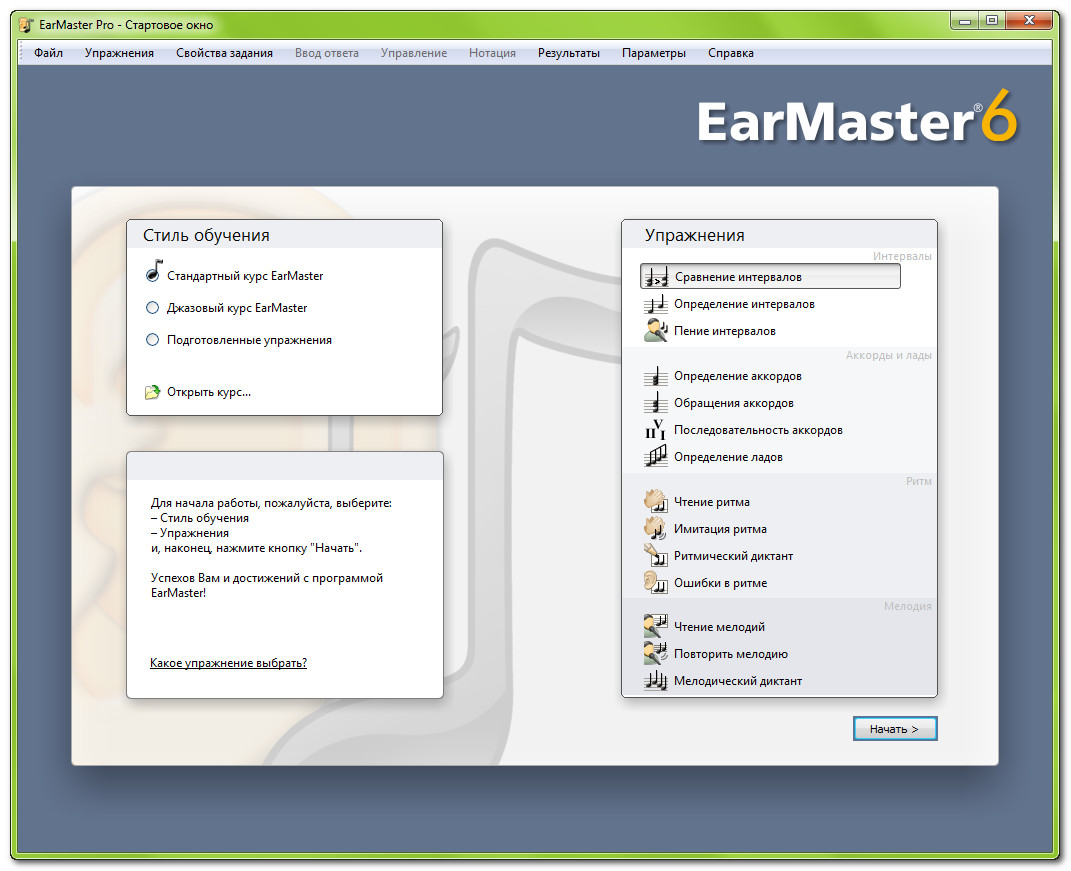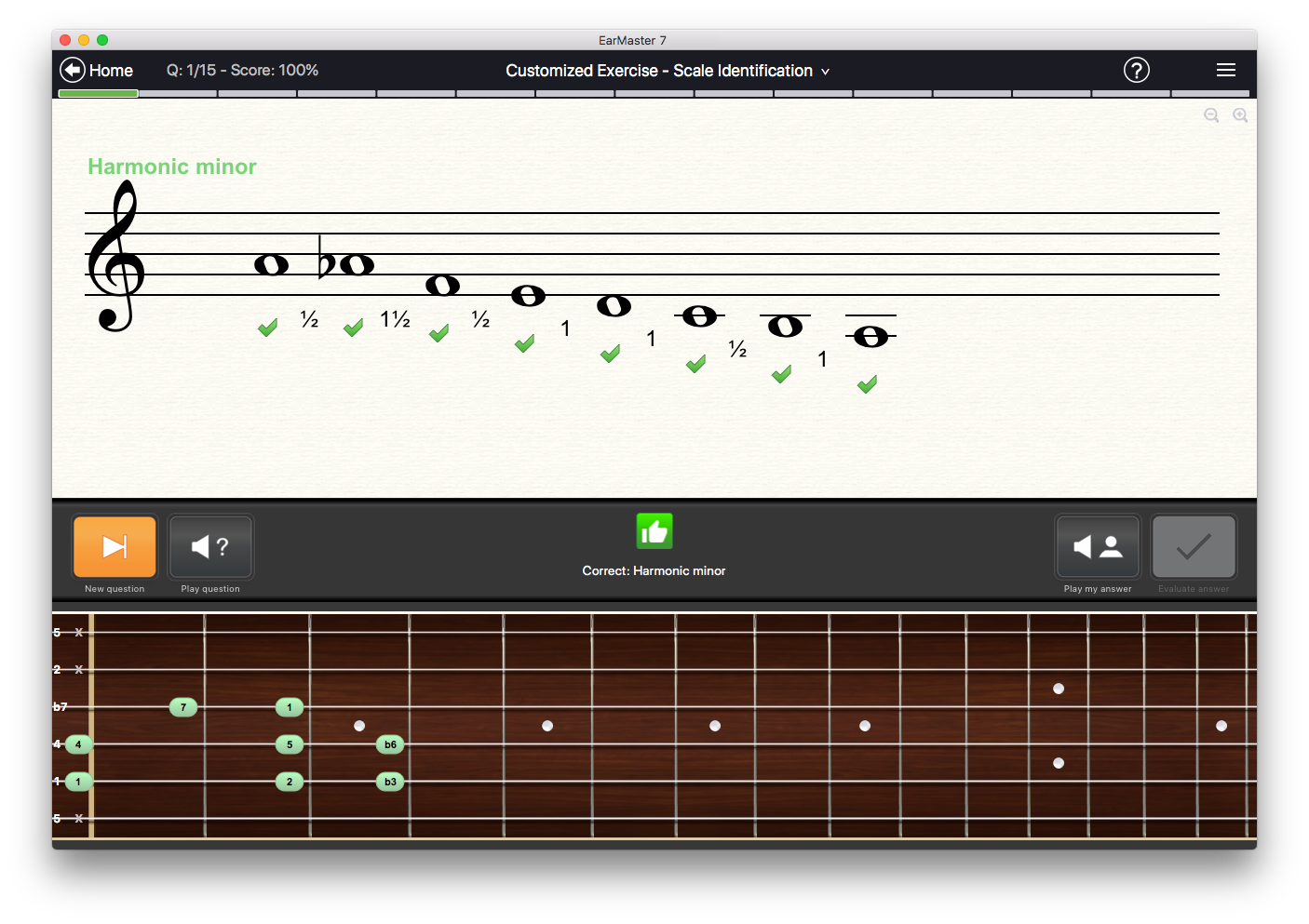

Music students, hobbyists or professional musicians will always find exercises, drills and tests that will challenge their sight-singing, aural and rhythmic skills regardless of their current level of musicianship.


On top of that, EarMaster’s progressive built-in courses will increase the difficulty with each exercise, accompanying you on your way to better aural and sight-reading skills. Over 2000 music theory exercises covering ear training, sight-singing practice, and rhythm training at all skill levels.Learn to recognize, transcribe and sing melodies, scales, chords, intervals, chord progressions and rhythms.Jazz course with swing rhythms, jazz chords, and sight-singing of Jazz standards.Detailed statistics to monitor your progress.Customize the exercises to practice the way you want.Answer questions with multiple-choice buttons, the notation staff, on-screen instruments (piano, guitar, bass, violin, cello, mandolin, banjo, etc.), solfege syllables, scale degrees and more.Use a microphone to sing, clap or play your answers in real-time.Use a MIDI keyboard to play your answers and control the functions of EarMaster remotely.Over a hundred instrument sounds sampled from real instruments.The four squares of the Microsoft logo now mean more than just the world’s most popular operating system: They stand for world-class hardware. And the Surface Pro is the chief example. Microsoft’s flagship genre bender hasn’t had a lot of serious competition over the years. If you want a tablet computer than doubles as a full-tilt laptop replacement, there aren’t many other good options out there. Outside of the iPad Pro, none of the copycats pose a serious threat to the reign of the Surface Pro as one of the best laptops. Now dressed in black for its sixth generation and packing a quad-core processor, the Pro still dominates, but you’ll have to dig a little deeper to see where Microsoft has made some truly noteworthy improvements.

Serious enough to be used in an office setting, yet playful enough to use in a coffee shop, the Surface Pro 6 has an aesthetic that marks it apart from both Apple and the rest of the PCs out there. The chassis is sleek, robust, and distinctive - all the things you want in a premium device.īut the truth is that very little has changed over the last few years of Surface 2-in-1s. It’s not any thicker or thinner, the bezels haven’t been cut down at all, and the general feeling of using the device has remained. The addition of a black option is a nice refresh to the overall look, but it’s by no means a game-changer. Standing still might seem safe, but it also leaves some issues unaddressed. As every other manufacturer races to cut every possible millimeter from their designs, the unchanged bezels on the Surface Pro 6 now look large and instantly noticeable. We give a bit more leeway to tablets and 2-in-1s in this respect, but some slimmer bezels could have really modernized the appearance of this device. The second is ports: The Surface Pro 6 has a single USB-A port, a mini-DisplayPort, a microSD slot hidden under the kickstand, the Surface Connect dock, and a headphone jack. These are the exact same slim options as included last year, but the lack of a USB-C port is now a glaring omission in 2018. Type Cover is still excellent, and still doesn’t come bundled in This device might be the only laptop or hybrid device we reviewed in 2018 to not include one – or to include an old mini-DisplayPort for video output. Though the sturdy kickstand is there as always, the Surface Pro 6 doesn’t come with a keyboard or touchpad. Instead, you’ll have to pick up the Type Cover, Microsoft’s fantastic attachable keyboard cover. As a tablet alone, the Surface Pro 6 doesn’t make much sense. These covers, available in a few different materials and styles, range from $130 to $150.


 0 kommentar(er)
0 kommentar(er)
